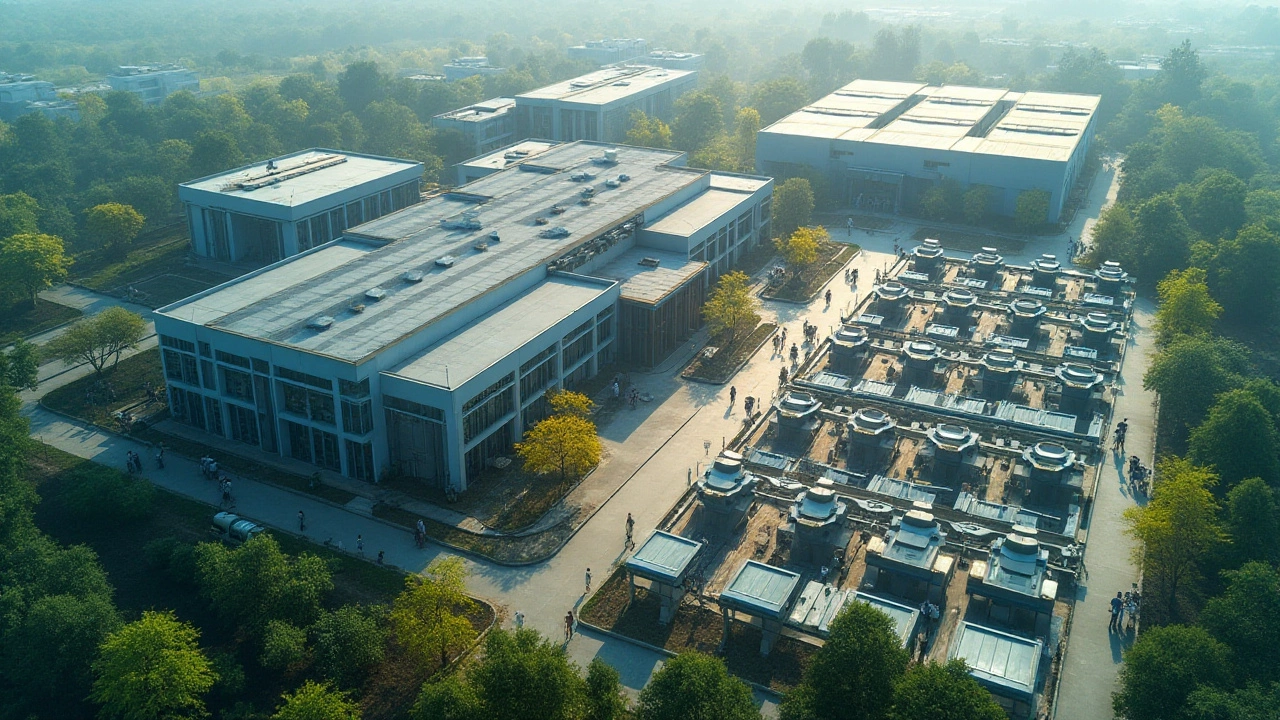Pharmaceutical Plants in India – What You Need to Know
If you're looking to make medicines at scale, India should be on your radar. The country hosts thousands of pharma plants, from small batch units to massive export‑ready complexes. These facilities benefit from skilled labor, competitive costs, and government schemes that keep the industry humming.
Seeing the big picture helps you decide where to invest your time and money. Below we break down the main reasons India stands out and give you a quick checklist for picking the right plant for your product.
Why India Is a Hotspot for Pharma Manufacturing
First off, India’s regulatory framework aligns closely with global standards. The Central Drugs Standard Control Organization (CDSCO) follows many World Health Organization guidelines, and many plants hold US FDA or European EMA approvals. That means products made here can reach overseas markets without extra hoops.
Second, the cost advantage is real. Labor rates are lower than in Europe or the US, while the skill level remains high because engineering and chemistry programs churn out fresh talent every year. This mix lets manufacturers keep unit costs down and still meet strict quality checks.Third, the government backs the sector with incentives like the Production Linked Incentive (PLI) scheme, tax holidays, and streamlined customs for raw material imports. Those perks translate into quicker set‑up times and better cash flow for new projects.
Finally, geography matters. Major pharma hubs such as Hyderabad, Ahmedabad, and Bangalore offer excellent logistics – airports, ports, and road networks that speed up raw‑material delivery and finished‑goods export. If you need to move bulk chemicals or finished batches quickly, these locations shave days off the supply chain.
Choosing the Best Plant for Your Business
Start with your product type. Small‑molecule drugs often need a plant with robust API (Active Pharmaceutical Ingredient) capabilities, while biologics look for facilities with clean‑room suites and bioreactors. Check the plant’s certification list – a US FDA stamp or EU GMP approval can save you a lot of paperwork later.
Next, ask about capacity flexibility. Some manufacturers can scale production up or down in weeks, which is crucial if you’re testing a new formula or facing seasonal demand spikes. Ask for real‑world examples of how they handled volume changes.
Don't ignore the supply chain. A plant that sources raw material locally can cut transport costs, but you also want backup vendors in case of shortages. Good plants maintain a buffer stock and have multiple suppliers for critical inputs.
Quality control is non‑negotiable. Tour the lab facilities, check how many quality analysts are on staff, and verify their validation procedures. Plants that invest in automated monitoring systems tend to have fewer deviations and faster batch releases.
Finally, consider the total cost of ownership. This includes not just rent or build‑out fees, but also utility rates, waste‑disposal charges, and any government fees. Some regions offer subsidized power rates for pharma, which can shave a sizable chunk off operating expenses.
Putting it all together, make a short list of plants that meet your regulatory, capacity, and cost criteria. Reach out, ask for a detailed proposal, and compare not just numbers but also the level of support they promise during the launch phase.
India's pharma landscape is vast, but with a clear checklist you can find a plant that fits your product, budget, and growth plans. Start by mapping your needs, then let the data guide you to the right partner – and you'll be on your way to turning a great drug idea into a market‑ready reality.

Top Pharmaceutical Manufacturing Plants in India
India is home to some of the largest and most advanced pharmaceutical manufacturing plants in the world. Companies like Sun Pharmaceuticals and Dr. Reddy's Laboratories lead the pack with cutting-edge technology and rigorous quality standards. This article explores the top pharma plants in India, shedding light on their operations and contributions to the global healthcare sector. For anyone interested in understanding the backbone of India's booming pharmaceutical industry, this serves as an informative guide.
Read More